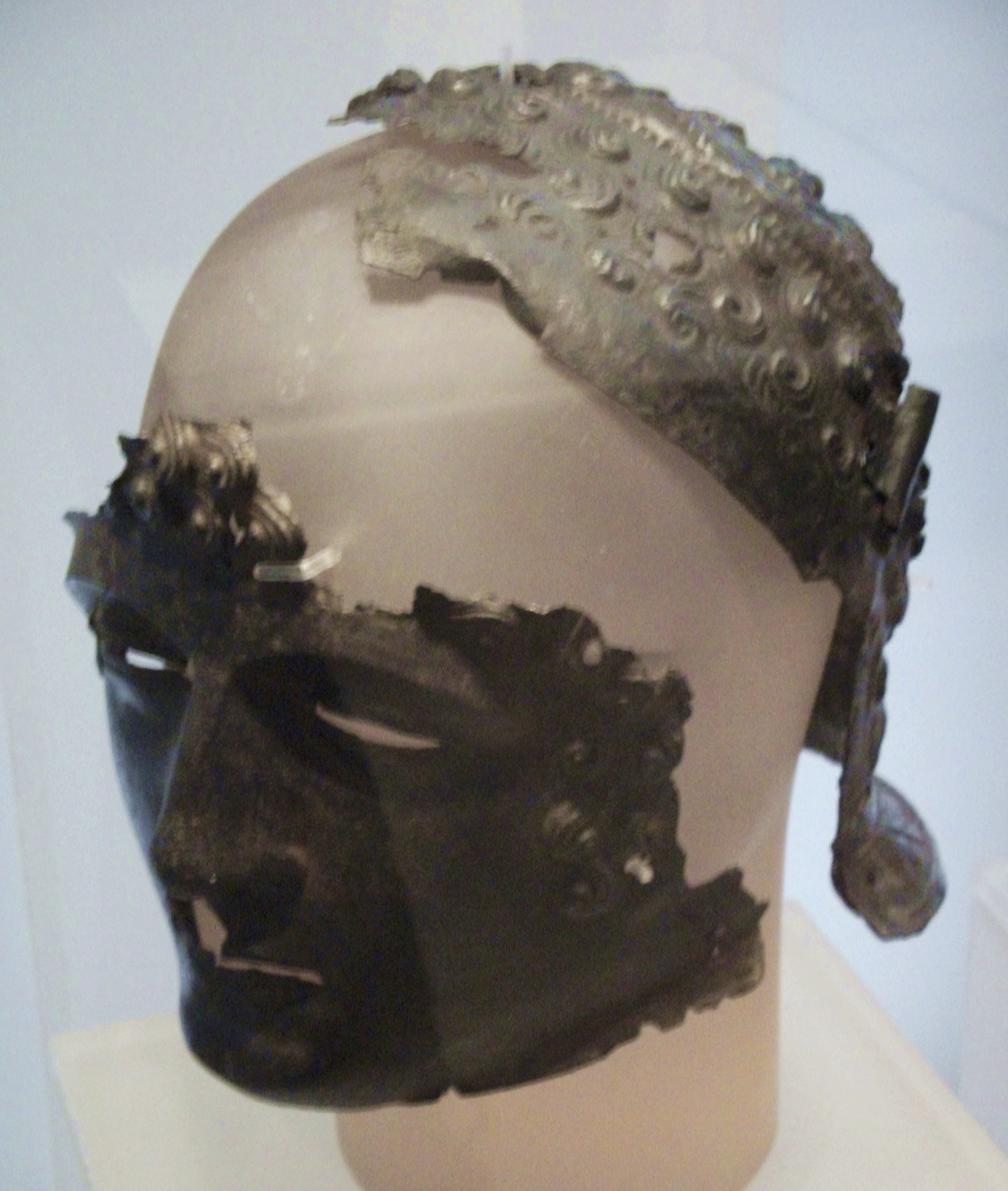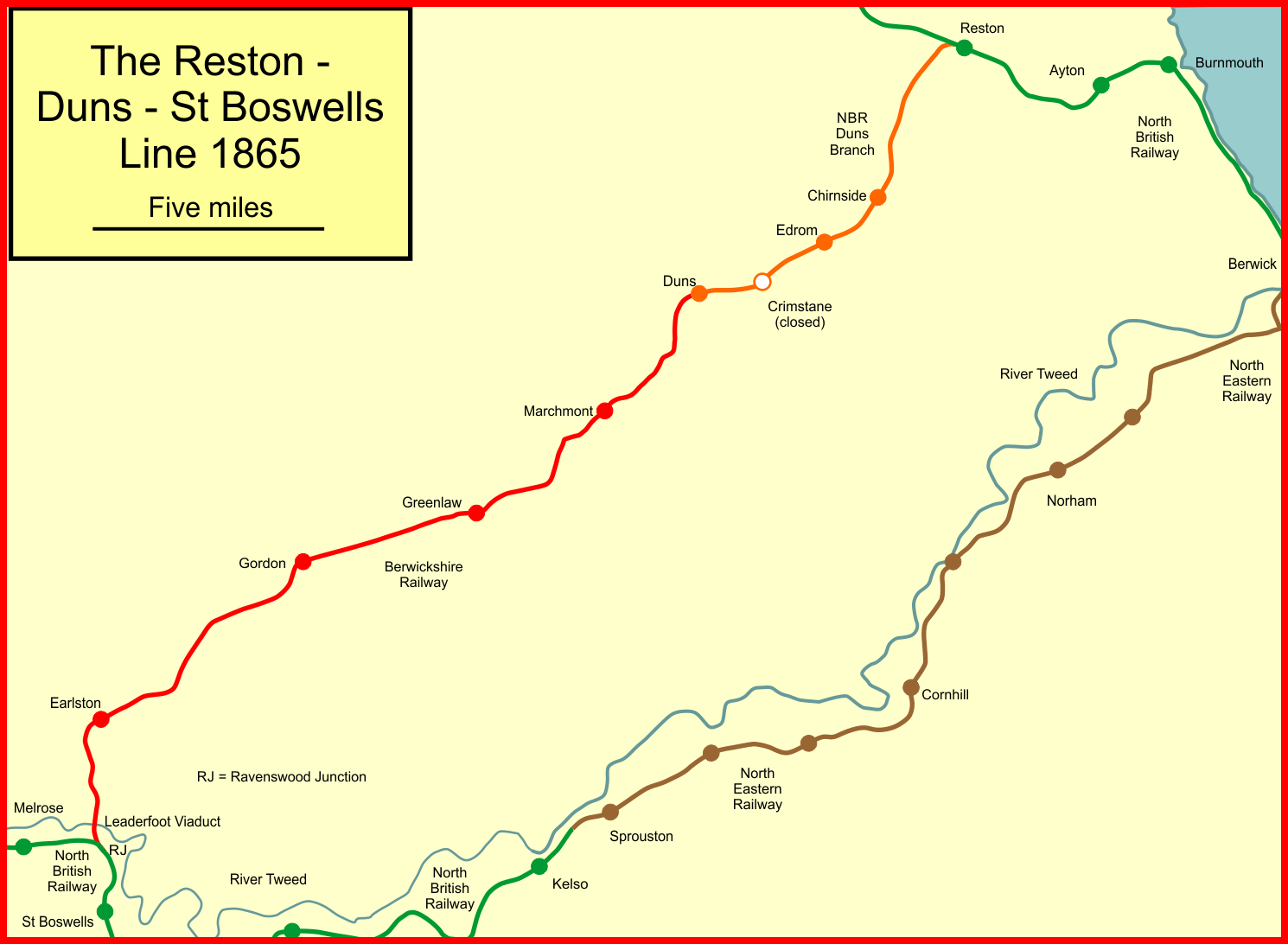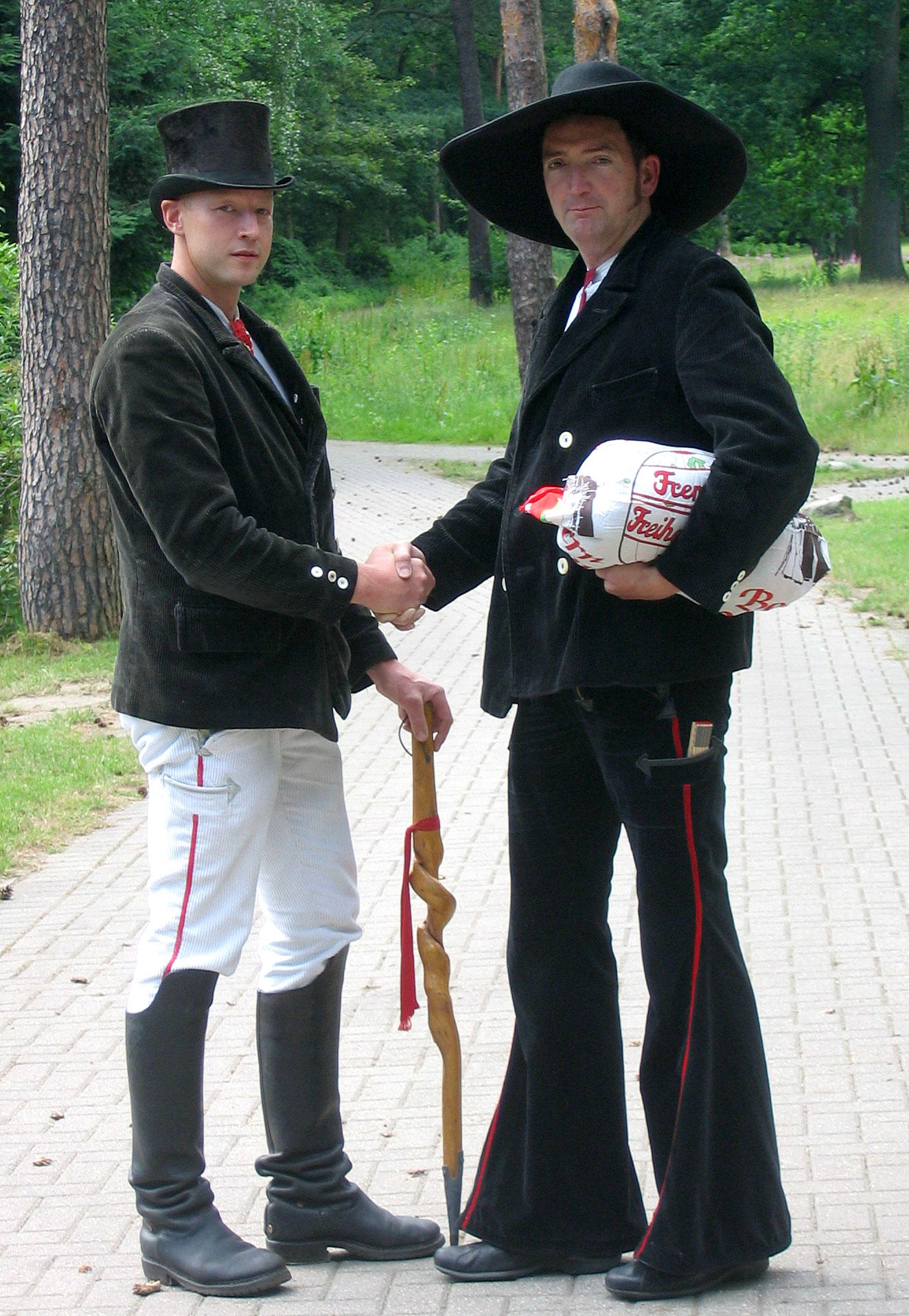|
Newstead, Scottish Borders
Newstead is a village in the Scottish Borders, about east of Melrose. It has a population of approximately 260, according to the 2001 census. Location and history It is situated in the valley of the River Tweed, at a crossing point for the Roman Dere Street. Newstead was of great strategic importance throughout history. This was principally due to the proximity of the prominent Eildon Hill. Former inhabitants include: the ancient Selgovae; the Roman army at Trimontium (Newstead); monks and masons, builders of nearby Melrose Abbey and, more recently, navvies working on the impressive railway viaduct at Leaderfoot. It is reputedly the oldest continually-inhabited settlement in Scotland. Certainly buildings, inhabited by the locals who provided for the needs of the soldiers when the Romans were there, and that the people who remained when the Romans went back south continued to live there, and that a population is recorded there from 650 AD onwards, until the present day. ... [...More Info...] [...Related Items...] OR: [Wikipedia] [Google] [Baidu] |
Census
A census is the procedure of systematically acquiring, recording and calculating information about the members of a given population. This term is used mostly in connection with national population and housing censuses; other common censuses include censuses of agriculture, traditional culture, business, supplies, and traffic censuses. The United Nations (UN) defines the essential features of population and housing censuses as "individual enumeration, universality within a defined territory, simultaneity and defined periodicity", and recommends that population censuses be taken at least every ten years. UN recommendations also cover census topics to be collected, official definitions, classifications and other useful information to co-ordinate international practices. The UN's Food and Agriculture Organization (FAO), in turn, defines the census of agriculture as "a statistical operation for collecting, processing and disseminating data on the structure of agriculture, coverin ... [...More Info...] [...Related Items...] OR: [Wikipedia] [Google] [Baidu] |
Newstead Helmet
The Newstead Helmet is an iron Roman cavalry helmet dating to 80–100 AD that was discovered at the site of a Roman fort in Newstead, near Melrose in Roxburghshire, Scotland in 1905. It is now part of the Newstead Collection at the National Museum in Edinburgh. The helmet would have been worn by auxiliary cavalrymen in cavalry displays known as '' hippika gymnasia''. Its discoverer, Sir James Curle (1862–1944), described the helmet as "one of the most beautiful things that the receding tide of Roman conquest has left behind". Discovery The helmet was discovered during excavations by James Curle during 1905 at the Roman fort of Trimontium, which is located near the triple peak of Eildon Hill at Newstead, after which the fort is named (Trimontium meaning "three hills"). During excavations between February 1905 and September 1910, Curle discovered a large number of Roman military artefacts at the fort, including items of Roman armour, horse harnesses, saddle plates, and sever ... [...More Info...] [...Related Items...] OR: [Wikipedia] [Google] [Baidu] |
List Of Places In The Scottish Borders
''Map of places in the Scottish Borders compiled from this list'':See the list of places in Scotland for places in other counties. This list of places in the Scottish Borders includes towns, villages, hamlets, castles, golf courses, historic houses, hillforts, lighthouses, nature reserves, reservoirs, rivers, and other places of interest in the Scottish Borders council area of Scotland. A * Abbey Mill *Abbey St. Bathans * Abbotsford Ferry railway station, Abbotsford House * Abbotrule * Addinston *Aikwood Tower * Ale Water * Alemoor Loch *Allanbank *Allanshaugh *Allanshaws * Allanton * Ancrum, Ancrum Old Parish Church * Anglo-Scottish Border * Appletreehall * Ashiestiel * Ashkirk *Auchencrow *Ayton, Ayton Castle, Ayton Parish Church, Ayton railway station B * Baddinsgill, Baddinsgill Reservoir *Bairnkine * Bassendean *Battle of Ancrum Moor * Battle of Humbleton Hill * Battle of Nesbit Moor (1355) * Battle of Nesbit Moor (1402) * Battle of P ... [...More Info...] [...Related Items...] OR: [Wikipedia] [Google] [Baidu] |
1952 Summer Olympics
The 1952 Summer Olympics ( fi, Kesäolympialaiset 1952; sv, Olympiska sommarspelen 1952), officially known as the Games of the XV Olympiad ( fi, XV olympiadin kisat; sv, Den XV olympiadens spel) and commonly known as Helsinki 1952 ( sv, Helsingfors 1952), were an international multi-sport event held from 19 July to 3 August 1952 in Helsinki, Finland. After Japan declared in 1938 that it would be unable to host 1940 Olympics in Tokyo due to the ongoing Second Sino-Japanese War, Helsinki had been selected to host the 1940 Summer Olympics, which were then cancelled due to World War II. Tokyo eventually hosted the games in 1964. Helsinki is the northernmost city at which a summer Olympic Games have been held. With London hosting the 1948 Olympics, 1952 is the most recent time when two consecutive summer Olympics Games were held entirely in Europe. The 1952 Summer Olympics was the last of the two consecutive Olympics to be held in Northern Europe, following the 1952 Winter Olymp ... [...More Info...] [...Related Items...] OR: [Wikipedia] [Google] [Baidu] |
Royal Navy
The Royal Navy (RN) is the United Kingdom's naval warfare force. Although warships were used by Kingdom of England, English and Kingdom of Scotland, Scottish kings from the early medieval period, the first major maritime engagements were fought in the Hundred Years' War against Kingdom of France, France. The modern Royal Navy traces its origins to the early 16th century; the oldest of the British Armed Forces, UK's armed services, it is consequently known as the Senior Service. From the middle decades of the 17th century, and through the 18th century, the Royal Navy vied with the Dutch Navy and later with the French Navy for maritime supremacy. From the mid 18th century, it was the world's most powerful navy until the World War II, Second World War. The Royal Navy played a key part in establishing and defending the British Empire, and four Imperial fortress colonies and a string of imperial bases and coaling stations secured the Royal Navy's ability to assert naval superiority ... [...More Info...] [...Related Items...] OR: [Wikipedia] [Google] [Baidu] |
Henry Fairfax (Royal Navy Officer)
Admiral Sir Henry Fairfax (21 January 1837 – 20 March 1900) was a Royal Navy officer who went on to serve as Commander-in-Chief, Plymouth. Naval career Fairfax was born in 1837, the third son of Sir Henry Fairfax, 1st Baronet. He joined the Royal Navy in December 1850, and during early years was posted to HMS ''Amphitrite'', which took him on two trips to the Behring Strait and the Arctic Sea. Promoted to lieutenant on 25 August 1858, he served on board the sloop HMS ''Ariel'' and on 4 November 1862 was promoted to commander for "distinguished valour in the capture of a pirate slaver". He was promoted to captain on 3 April 1868, and served as naval attaché on a special mission to the Sultan of Zanzibar in 1872–73. On his return he served for nearly 12 months as private secretary to George Goschen, First Lord of the Admiralty. In 1874, as commander of , he led an astronomical expedition to Kerguelen Islands in the southern Indian Ocean, and remained with her as Seni ... [...More Info...] [...Related Items...] OR: [Wikipedia] [Google] [Baidu] |
Berwickshire Railway
The Duns Branch and the Berwickshire Railway together formed a through railway route from Reston, near Berwick-upon-Tweed, to St Boswells in the Scottish Borders. The line was promoted in two stages. The first was from Reston on the Edinburgh to Berwick main line to Duns (then spelt ''Dunse'', and the county town of Berwickshire); it opened by the North British Railway in 1849. The second section was promoted independently by the Berwickshire Railway Company, but with considerable assistance from the North British Railway. It opened most of its line in 1863, but delay in constructing a large viaduct, Leaderfoot Viaduct, led to the opening of the final section of the line being delayed until 1865. The North British Railway had conceived the line as a strategic trunk route across southern Scotland, but this development was never realised, and the line was never heavily used. During the violent rainstorm in the area in August 1948 the line was breached west of Earlston, and the p ... [...More Info...] [...Related Items...] OR: [Wikipedia] [Google] [Baidu] |
Journeyman
A journeyman, journeywoman, or journeyperson is a worker, skilled in a given building trade or craft, who has successfully completed an official apprenticeship qualification. Journeymen are considered competent and authorized to work in that field as a fully qualified employee. They earn their license by education, supervised experience and examination. Although journeymen have completed a trade certificate and are allowed to work as employees, they may not yet work as self-employed master craftsmen. The term "journeyman" was originally used in the medieval trade guilds. Journeymen were paid daily and the word "journey" is derived from ''journée'', meaning "whole day" in French. Each individual guild generally recognised three ranks of workers: apprentices, journeymen, and masters. A journeyman, as a qualified tradesman could become a master and run their own business, but most continued working as employees. Guidelines were put in place to promote responsible tradesmen, who ... [...More Info...] [...Related Items...] OR: [Wikipedia] [Google] [Baidu] |
Masonic Lodge
A Masonic lodge, often termed a private lodge or constituent lodge, is the basic organisational unit of Freemasonry. It is also commonly used as a term for a building in which such a unit meets. Every new lodge must be warranted or chartered by a Grand Lodge, but is subject to its direction only in enforcing the published constitution of the jurisdiction. By exception the three surviving lodges that formed the world's first known grand lodge in London (now merged into the United Grand Lodge of England) have the unique privilege to operate as ''time immemorial'', i.e., without such warrant; only one other lodge operates without a warrant – the Grand Stewards' Lodge in London, although it is not also entitled to the "time immemorial" title. A Freemason is generally entitled to visit any lodge in any jurisdiction (i.e., under any Grand Lodge) in amity with his own. In some jurisdictions this privilege is restricted to Master Masons (that is, Freemasons who have attained the ... [...More Info...] [...Related Items...] OR: [Wikipedia] [Google] [Baidu] |
Christine Graham
Christine may refer to: People * Christine (name), a female given name Film * ''Christine'' (1958 film), based on Schnitzler's play ''Liebelei'' * ''Christine'' (1983 film), based on King's novel of the same name * ''Christine'' (1987 film), a British television film by Alan Clarke and Arthur Ellis in the anthology series ''ScreenPlay'' * ''Christine'' (2016 film), about TV reporter Christine Chubbuck Music Albums * ''Christine'' (soundtrack), from the 1983 film * ''Christine'' (Christine Guldbrandsen album), 2007 Songs * "Christine", by Morris Albert, a B-side of " Feelings", 1974 * "Christine" (Siouxsie and the Banshees song), 1980 * "Christine", by the House of Love from ''The House of Love'', 1988 * "Christine", by Orchestral Manoeuvres in the Dark from ''Liberator'', 1993 * "Christine", by Luscious Jackson from '' Electric Honey'', 1999 * "Christine", by Motörhead from '' Kiss of Death'', 2006 * "Christine" (Christine and the Queens song), 2014 Other me ... [...More Info...] [...Related Items...] OR: [Wikipedia] [Google] [Baidu] |
Tweeddale, Ettrick And Lauderdale (Scottish Parliament Constituency)
Tweeddale, Ettrick and Lauderdale was a constituency of the Scottish Parliament ( Holyrood). It elected one Member of the Scottish Parliament (MSP) by the plurality (first past the post) method of election. Also, however, it was one of nine constituencies in the South of Scotland electoral region, which elected seven additional members, in addition to nine constituency MSPs, to produce a form of proportional representation for the region as a whole. For the 2011 Scottish Parliament election, the seat of Tweeddale, Ettrick and Lauderdale was re-established as Ettrick, Roxburgh and Berwickshire and Midlothian South, Tweeddale and Lauderdale Electoral region The other eight constituencies of the South of Scotland region were: Ayr, Carrick, Cumnock and Doon Valley, Clydesdale, Cunninghame South, Dumfries, East Lothian, Galloway and Upper Nithsdale and Roxburgh and Berwickshire. The region covered the Dumfries and Galloway council area, the Scottish Borders coun ... [...More Info...] [...Related Items...] OR: [Wikipedia] [Google] [Baidu] |







